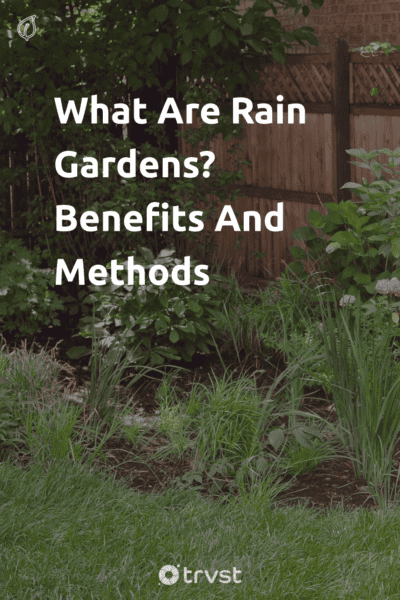What Are Rain Gardens? Benefits And Methods
There are various ways to design the area surrounding your home. You could decide to have only pavements or include a lawn area. You could also plant an herb garden or a flower bed on your lawn. Then, there are rain gardens. Including green spaces in residential areas is advisable because they improve the quality of life. So, what are rain gardens?
A rain garden is the best choice for a green structure in the environment. It provides aesthetic appeal and protects the environment. It is usually set up inches deep into the sloppy ground to prevent the transportation of pollutants into nearby water sources.
The pollutants could be motor oil, pet waste, or spray paint. In this article, we talk about rain gardens and their benefits extensively. We'll also discuss tips on rain garden plant selection, planning, and setting up a rain garden.
Related Read: Rain Quotes.
What is a rain garden?
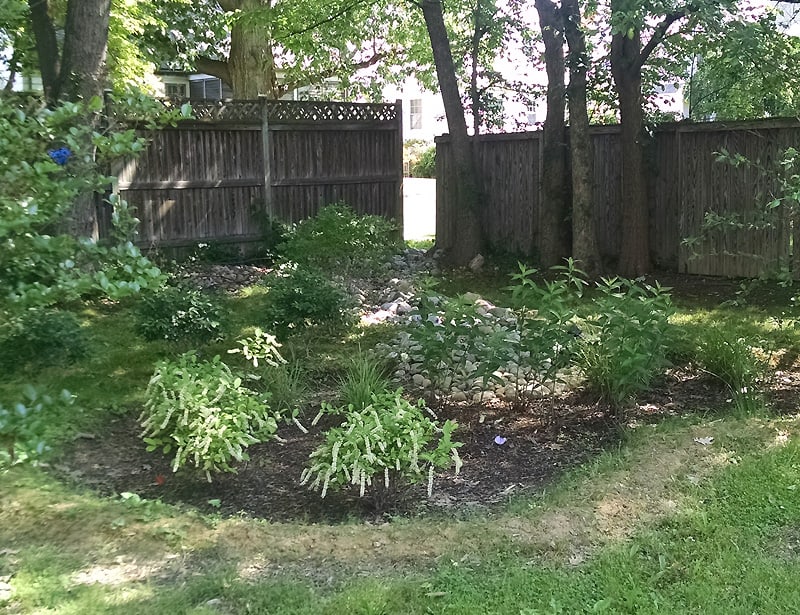
A rain garden is a garden in a shallow depression that forms naturally. The dip receives rainwater runoff (rainwater, melting snow) from impermeable surfaces like parking lots, pavements, driveways, roofs, and compacted lawn areas. It usually contains native plants that can withstand water logging for up to 48 hours.
The rain garden is not a pond or a wetland. It can moisten the soil, but it doesn't hold stagnant water. It holds rain and stormwater runoff during rainfall and dries after a few hours. Rain gardens are excellent green infrastructures because they prevent rainwater runoff from entering nearby streams, water ponds, rivers, and other local waterways.
Rain gardens have many benefits apart from covering the sogging areas of your backyard. They filter runoff water from impervious surfaces, removing impurities and pollutants like herbicides, pesticides, pet waste, and chemicals.
Runoff water harms the environment by picking up the harmful pollutants we leave behind and transporting them into the aquatic environment. These pollutants could harm aquatic and human life.
Rain gardens are essential to protecting local waterways from pollutants transported by stormwater runoff. They work more efficiently than storm drains. You can create a rain garden yourself or employ utility companies.
Related read: Why Are Urban Green Spaces Important?
Benefits of a rain garden
1. Rain gardens prevent water pollution.
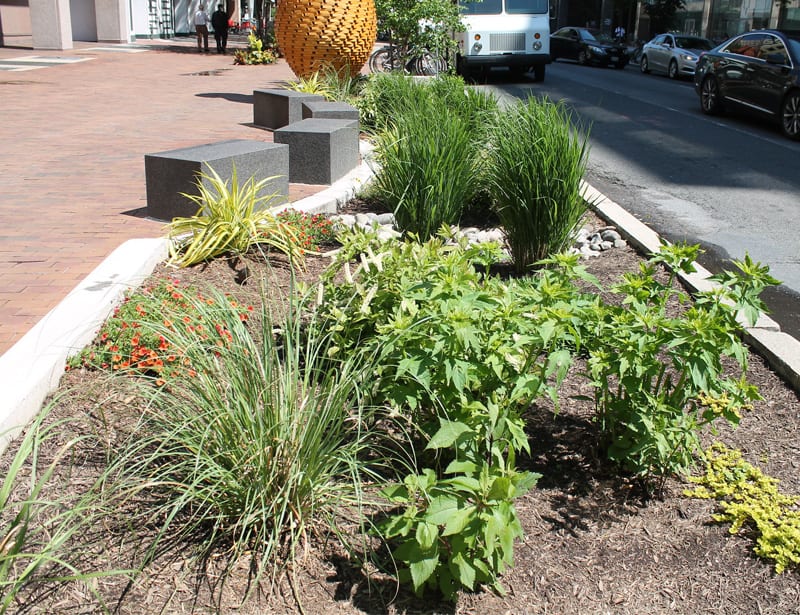
A rain garden prevents water pollution by diverting runoff from storm sewers, reducing the amount of contaminated water that enters waterways. The plants and soils filter nutrients, soil sediments, and toxic materials from the runoff before entering waterways.
The rainwater soaks into the ground and evaporates, reducing the quantity of water that enters rivers and lakes.
2. It conserves water.
A rain garden saves more water than owning a garden or a lawn. You don’t need to water the rain garden’s plants with a garden hose, except during extreme dry seasons. You have more water to cater to the crucial chores that require it.
Furthermore, it reduces the need for artificial irrigation. It's an excellent innovation for regions regularly plagued by drought or water restrictions. It also saves you time because you don’t have to spend time watering.
3. Rain gardens are pollinator-friendly.
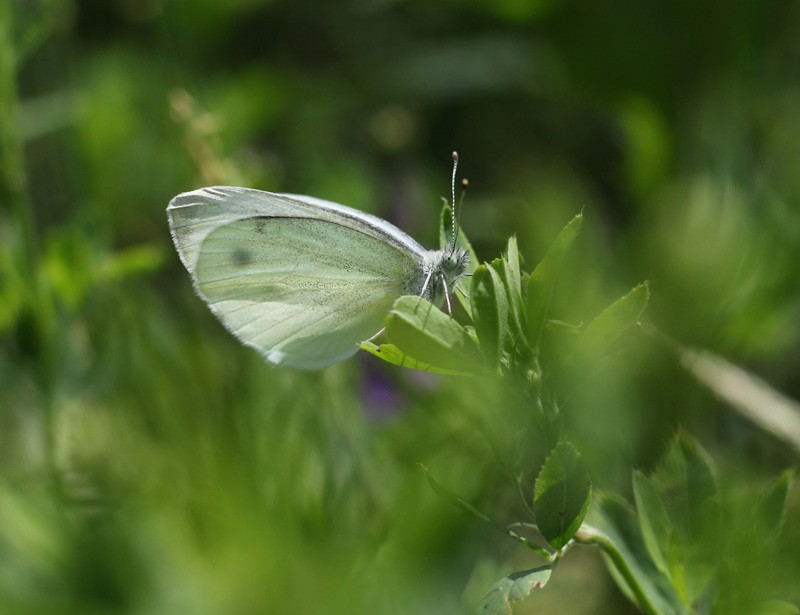
Rain gardens encourage pollinators like birds, butterflies, and bees into the environment, ensuring the continuance of nature’s cycle. Native plants like blue hyssop, daylilies, yarrow, and purple coneflower attract pollinators to your rain garden. The National Wildlife Federation’s list in the last section includes native plants for your region.
4. A rain garden also improves water quality.
The soil and plants in rain gardens act as a filtration system. They remove pollutants like heavy metals, toxic chemicals, and excess nutrients from rainwater runoff, naturally improving the quality of water that enters the ground and other water sources.
5. Rain gardens support local wildlife.
A rain garden supports the local wildlife in your neighborhood. Rain gardens provide habitat for animals like bees, butterflies, frogs, toads, turtles, and native birds. The wet soil also harbors microorganisms that improve the soil quality and nutrients.
Having a rain garden reduces mosquito breeding and increases the presence of beneficial insects in your garden. Apart from providing habitats, a rain garden also provides food for wildlife. It promotes the cycle of life that occurs in the wildlife ecosystem right in your yard.
6. You don't need to use herbicides, pesticides, and fertilizers in your rain garden.
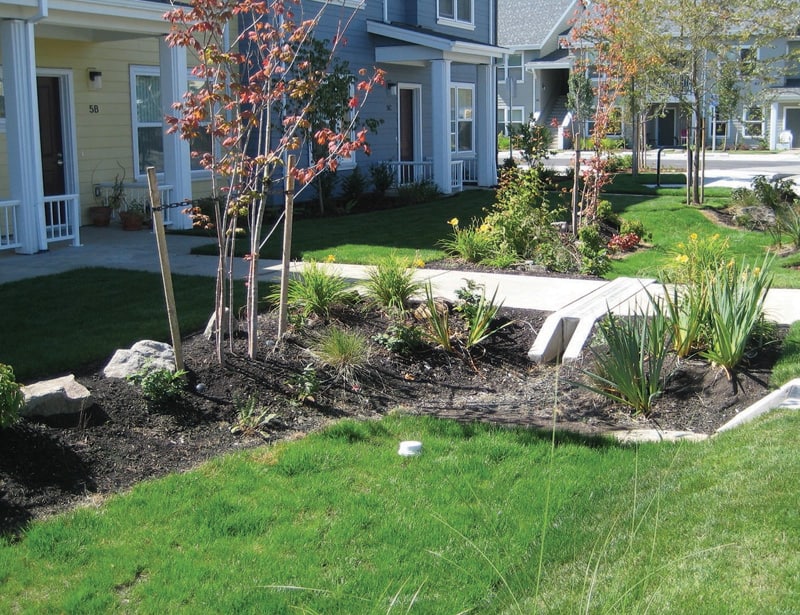
Another benefit of tending a rain garden is that you don’t need fertilizers, pesticides, or herbicides to aid plant growth. The plants in a rain garden are native to the region. They can thrive on your region’s soil without any help. It saves you from spending money on fertilizers while protecting the environment.
7. Rain gardens also reduce flooding risks.
Rain gardens help control erosion and prevent stormwater floods. They drain and divert water from your home’s foundation. Storm runoff pools at the base of your house and groundwater foundation, weakening the building structure.
However, rain gardens absorb most of the water. Plant roots also help with soil drainage, allowing much rainwater to soak into the ground. Placing your rain garden strategically, at least 10 feet away from your house, helps solve drainage problems. According to Rutgers’s research, rain gardens soak up to 30% more water than a regular lawn.
8. Having a rain garden improves the aesthetic of your home.
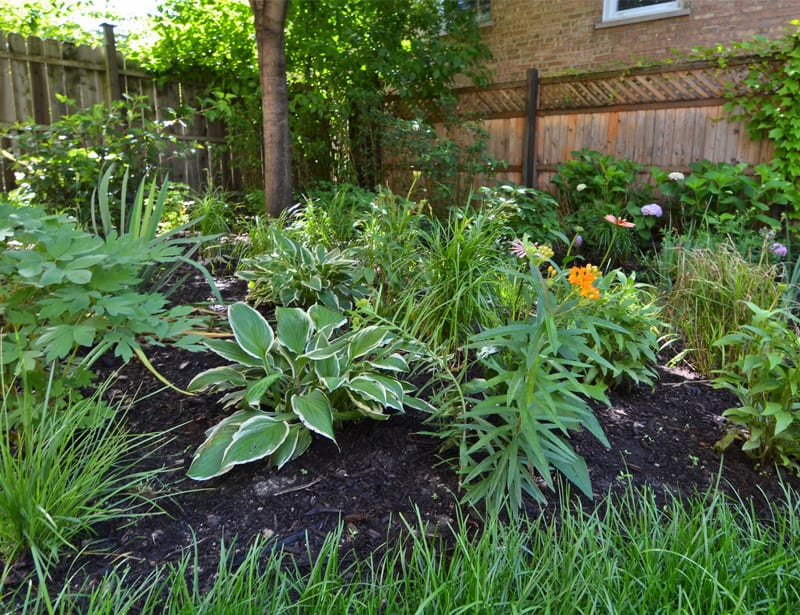
Setting up a rain garden in your home helps beautify your immediate environment. Using attractive plants like shrubs, grasses, and flowering perennials contributes to a healthy ecosystem.
When you arrange the plants to fit into the landscape, you will be pleased to spend time in your yard and breathe in fresh air.
9. Rain gardens require less maintenance than lawns.
Rain gardens are more maintenance-effective than lawns. They thrive in natural rainfall and local climate conditions, so there is no need for mowing, pest control, or fertilizing.
During the first year of setting up the rain garden (depending on the season you started your garden), all that is needed is occasional watering and weeding. If you want to improve the soil quality of your rain garden site, you can make compost from your food scraps and yard waste.
How to plan a rain garden?
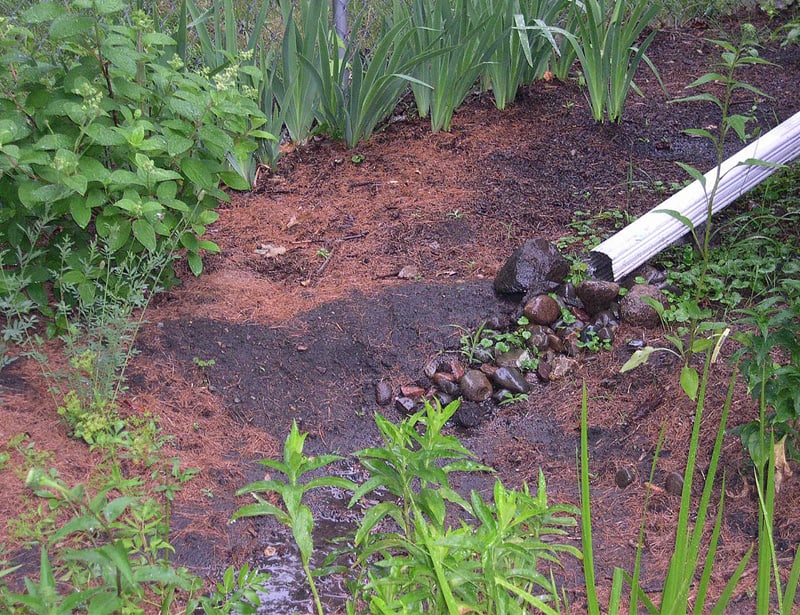
Before you plant a rain garden, you need to know if the ground is suitable. According to the Royal Horticultural Society, you need to be sure the soil texture has good drainage and can hold water well.
To test your soil, dig 10 inches deep and fill it with water. Refill the hole with water and observe how long it takes for the water to drain. Ideally, a rain garden should drain water at a minimum rate of 1.25cm (½in) per hour.
However, an absorption rate of 2 inches per hour works. Anything longer is not suitable for a rain garden. Cay soils are unsuitable for rain gardens because they are heavy and take longer for water to drain. An area with a high water table isn't suitable either.
You also need to determine the size of the garden. The size usually depends on the space available, the soil type of your area, its drainage rate, and the roof’s size. Measure the roof area receiving the most rain and runoff via a downpipe.
Multiply the area by 20% to get the area for your rain garden. The best placement is always between impervious surfaces like roofs, driveways, and streets. Avoid placing the garden near underground facilities. It should be at least 10 feet away from your home.
How to make a rain garden?
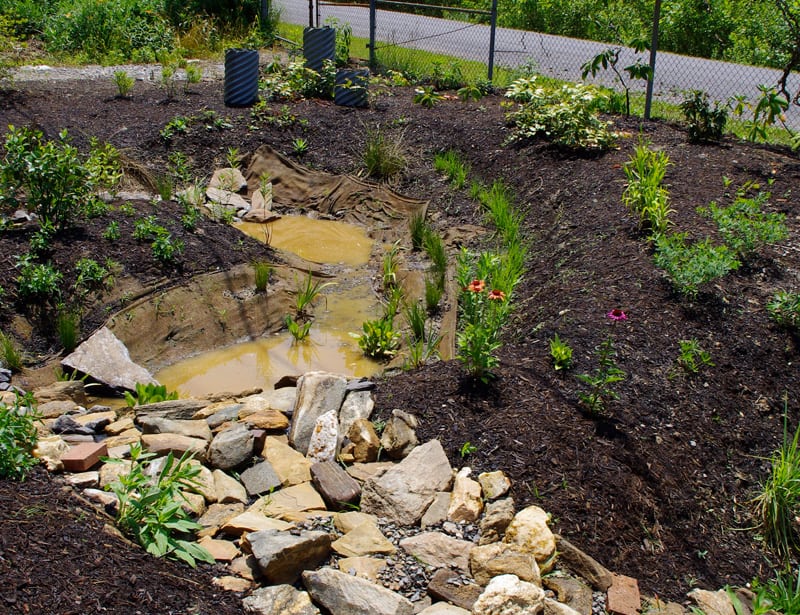
- Clear the vegetation around the intended rain garden site.
- Use a garden hose or strings to map out the shape of the garden.
- The next step is to dig your desired depth. Dig in a saucer shape with a flat base and correct levels.
- You can use the extra soil you dig out to make the garden’s boundary. The border has to be thick and compact enough to keep water in the rain garden.
- If the area is sloping, the top end requires more digging than the lower end. You can also use the soil from the top to fill in the lower area and make it more leveled.
- Also, add organic matter like compost, leaves, or well-rotted manure to improve soil structure, especially sandy soil.
- Ensure that the soil you are planting on is loose, not compacted.
- Make a channel of bricks to transport rainwater from the downpipe to the rain garden. The runoff won’t enter the garden directly without a little direction.
- You can also add gravel at the opening water passes into the garden.
- Do not plant your garden near tree roots.
Tips on rain garden plant selection
Before we discuss the types of plants in a rain garden, here are some tips on rain garden plant selection:
- Place plants that can survive on permanently wet soil near the inlet pipe and toward the base of the garden.
- Use plants that thrive in dry and wet conditions on the edges of the garden.
- Add grasses to give insects cover, especially during winter.
- Include plants that attract pollinators.
- Before planting, lay the plants out still in their containers and adjust if necessary.
- Prevent weed growth by adding flower seed mix between plants. Ensure the flower seeds are well suited for the condition of your rain garden.
Types of native plants that thrive in rain gardens
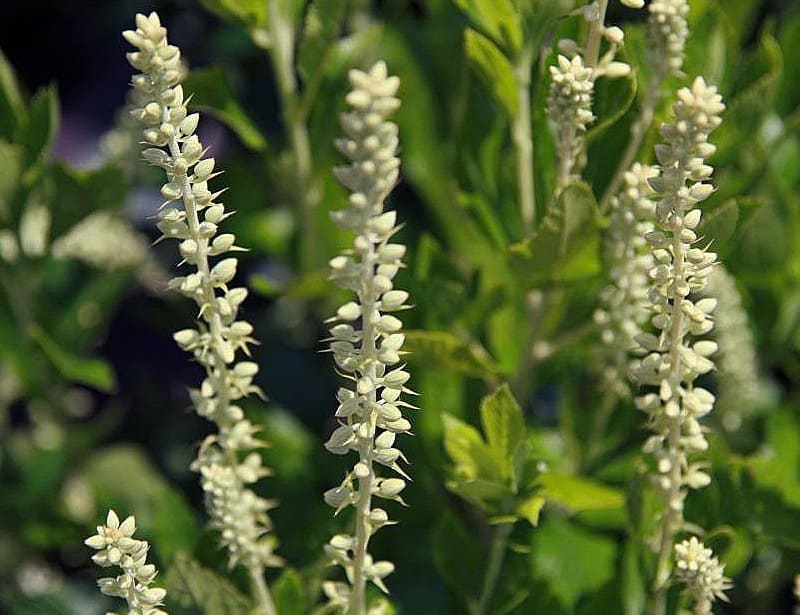
When choosing plants for rain gardens, choose herbaceous perennials, shrubs, and grasses. Check the National Wildlife Federation native plant list for plants more suitable for your region.
Here are some plants you can add to your garden:
- Butterfly bush [Nanho Purple]
- Hydrangea 'Annabelle’
- Red guelder rose
- Lamb's ear [Stachys byzantina]
- Lady's mantle
- Sweet Pepperbush
- SpiceBush
- American Beauty Berry
- Wood Fern
- Switchgrass
- Redtwig Dogwood
- Dwarf Palmetto
- Bee Balm
Conclusion
You should design a rain garden basin on sloped areas around your home to avoid constant wet feet from standing in water. Standing water breeds bugs like mosquitoes and holds other fungi and microorganisms that are dangerous to human well-being. However, avoid planting the garden on utility lines because it can damage it or cause other problems.
For further readings, check articles posted by credible sources like the Environmental Protection Agency and Royal Horticultural Society.
Jen’s a passionate environmentalist and sustainability expert. With a science degree from Babcock University Jen loves applying her research skills to craft editorial that connects with our global changemaker and readership audiences centered around topics including zero waste, sustainability, climate change, and biodiversity.
Elsewhere Jen’s interests include the role that future technology and data have in helping us solve some of the planet’s biggest challenges.
Fact Checked By:
Isabela Sedano, BEng.

